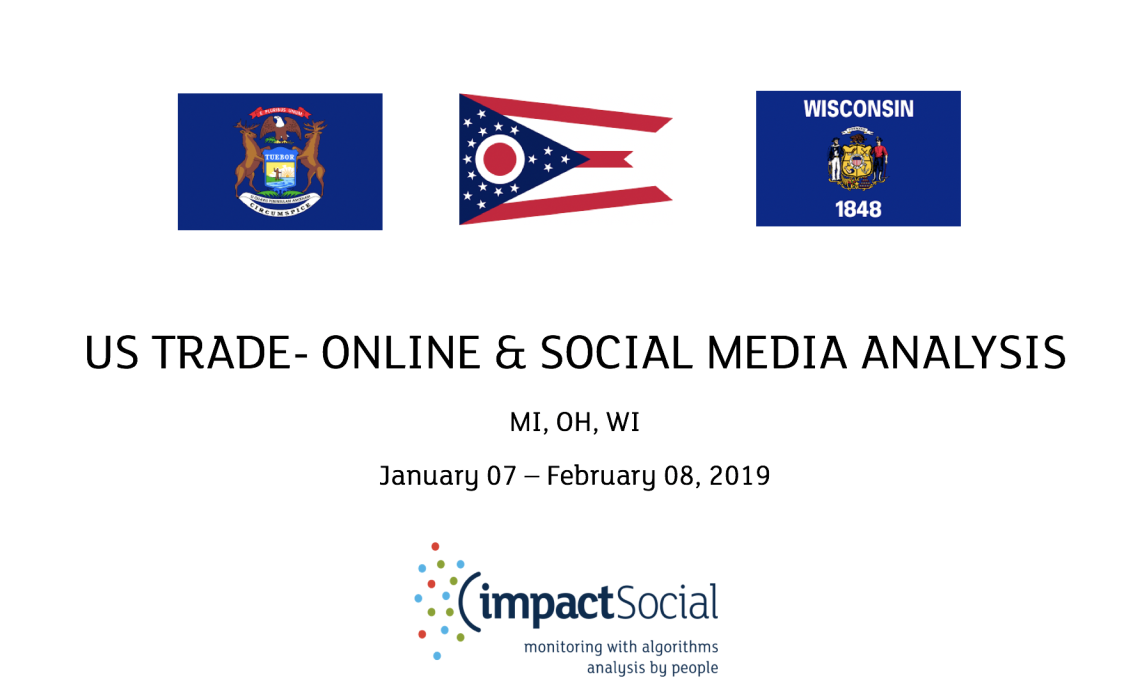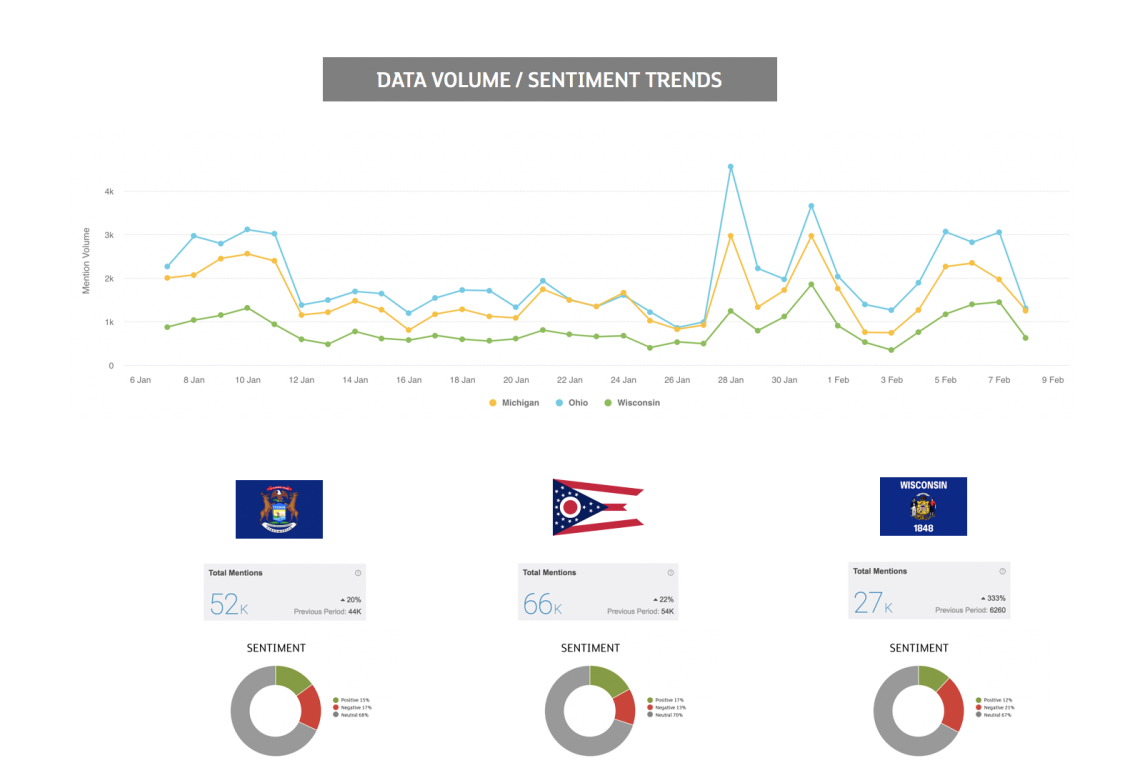US Trade Policy
February 8th at 12:00am
Impact Social analyzed the online and social media discussion about US trade policy in the states of Michigan, Ohio and Wisconsin.
The objective was to provide insight into attitudes, organic conversations and messages relating to trade and to understand what/who is driving the discussions. Each state has been analysed separately, with data geo-tagged accordingly. Sentiment has been read from the perspective of Trump/The White House and whether posts were positive, negative or neutral towards Trump’s trade policy.
Search terms: Trade, Tariffs, NAFTA, USMCA, Soybeans, Aluminum, Steel, Imports, Exports, Trade deficit, Robert Lighthizer, USTRtariffs + agriculture, tariffs + economy, tariffs + business, tariffs + manufacturing, tariffs + jobs, American manufacturing
Key takeaways:
Trump’s key messages on trade, the economy and jobs are focussed and relentless. They are clear and robust across the three states analysed. However as time goes on with no major new wins on job creation or the much lauded trade deals, there are signs that cracks may be beginning to appear.
There is a “war of facts” from both sides which claim either positive or negative economic numbers on trade, the economy and jobs. In many ways these have the effect of cancelling each other out, although the overall picture is marginally negative towards Trump.
The most powerful messages come from individuals and businesses in-state with their accounts of how Trump’s economic policy is impacting their lives – especially for farmers and in manufacturing sectors.
Organic language on issues relating to trade is easily found across the three states which should provide a strong foundation for push communications.
Michigan State specific pull-out - FOXCONN:
Heavy fallout from news that the technology company was reconsidering plans to make LCD panels at its Wisconsin plant. The company said it intends to hire mostly engineers and researchers rather than the manufacturing workforce the project originally promised (much lauded by team Trump at the time).
Announced at a White House ceremony in 2017, the 20-million square foot campus marked the largest greenfield investment by a foreign-based company in U.S. history and was praised by President Donald Trump as proof of his ability to revive American manufacturing.



